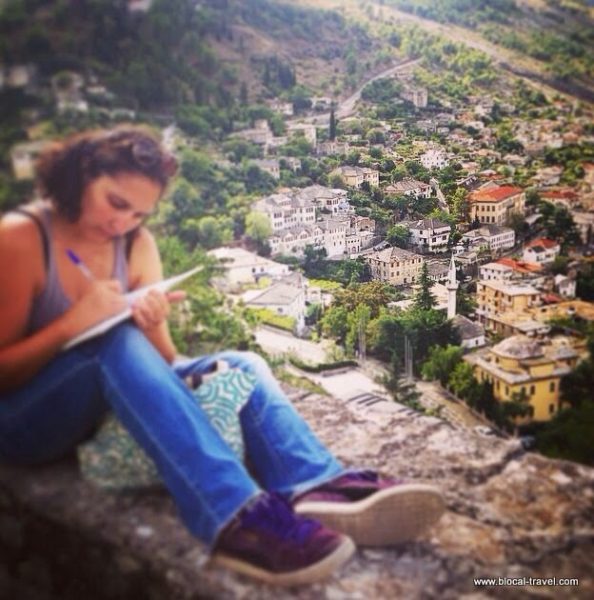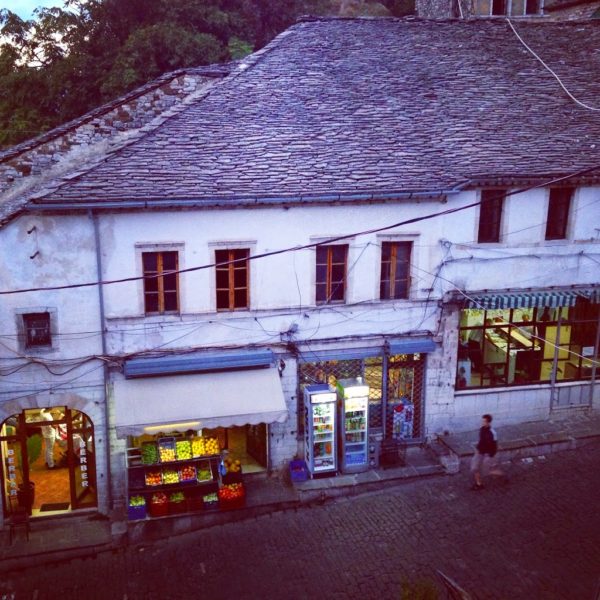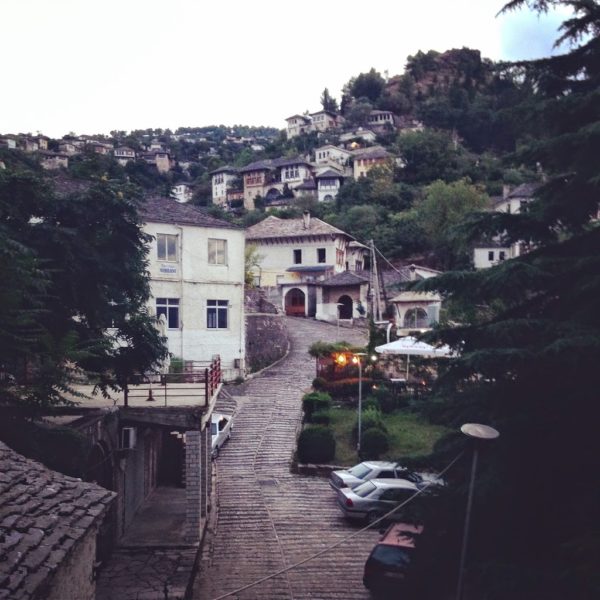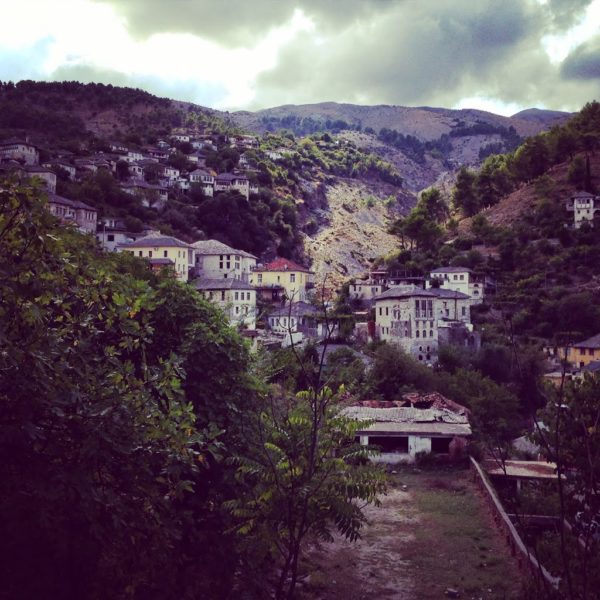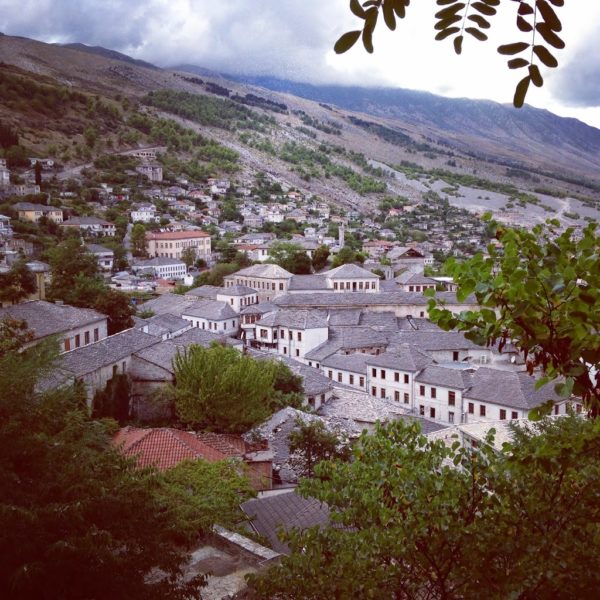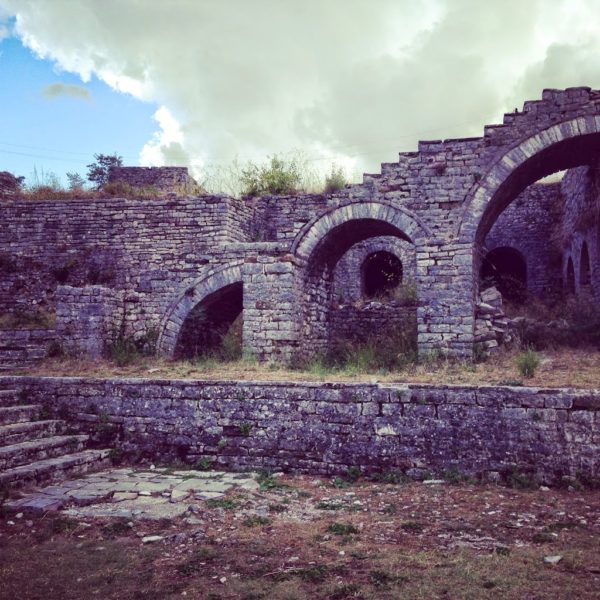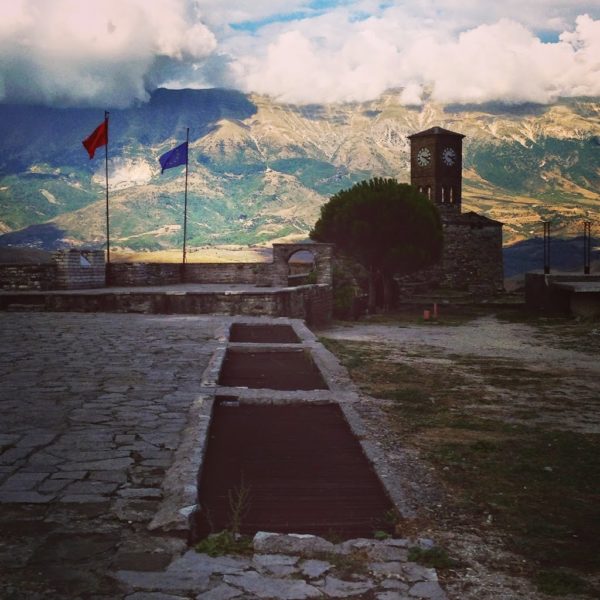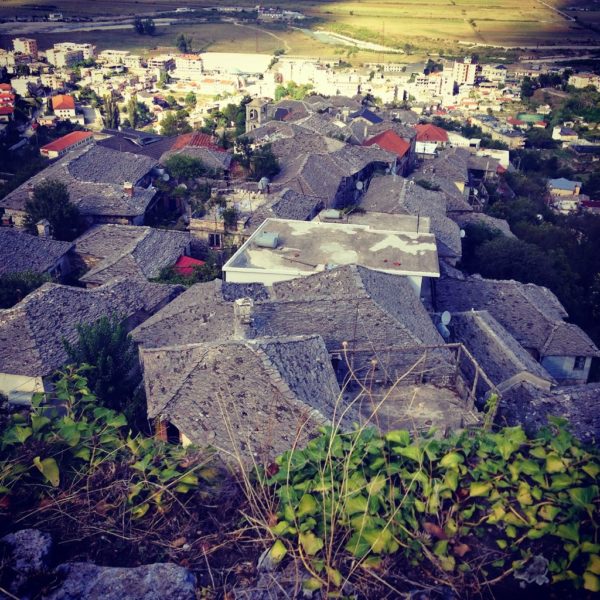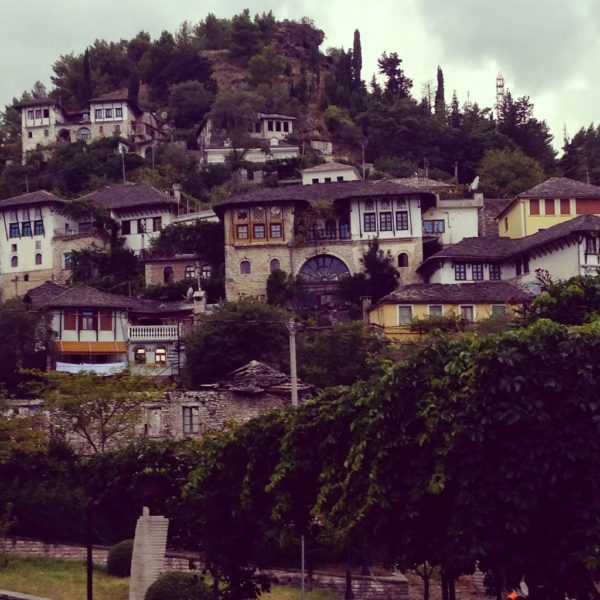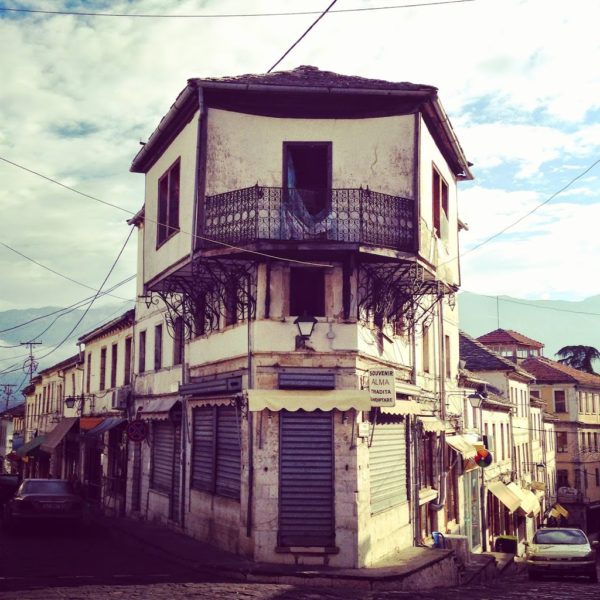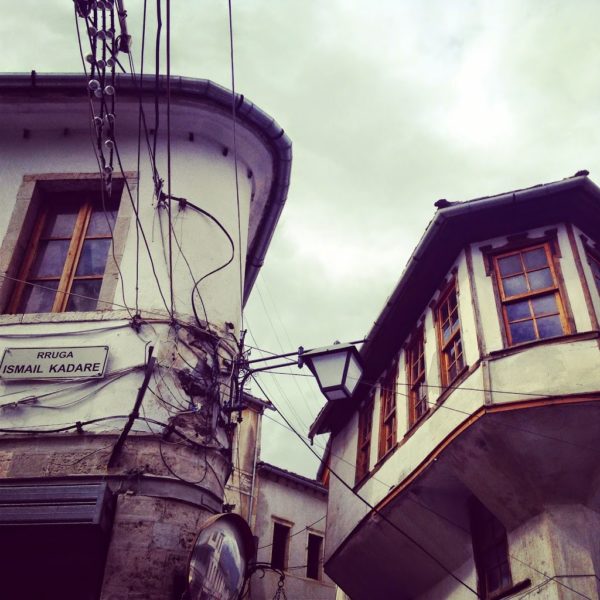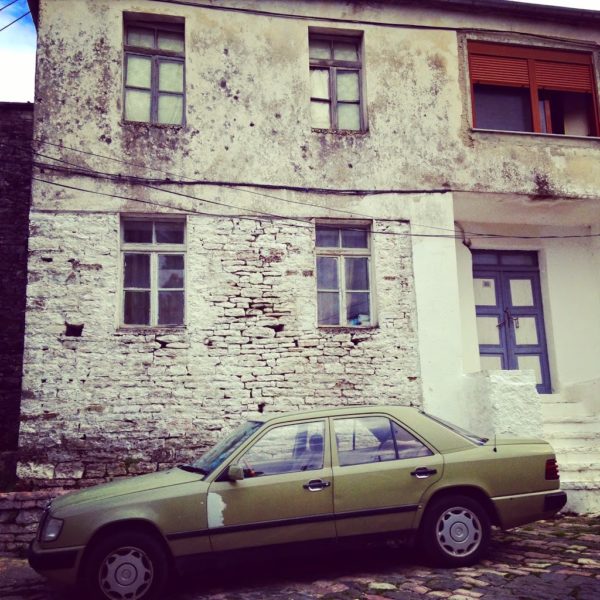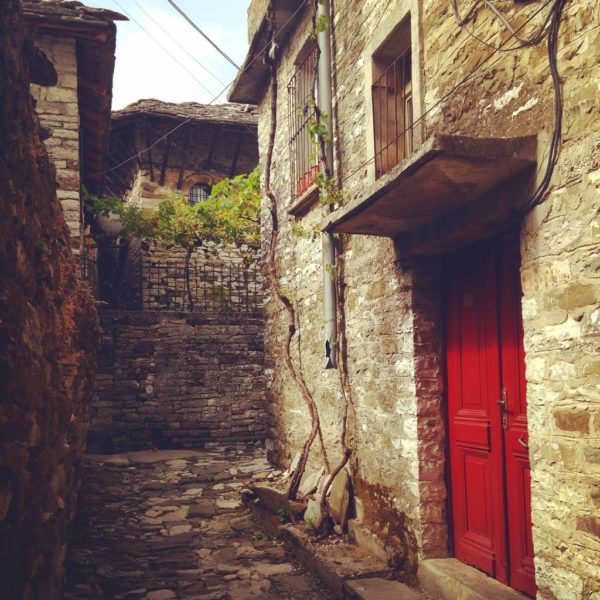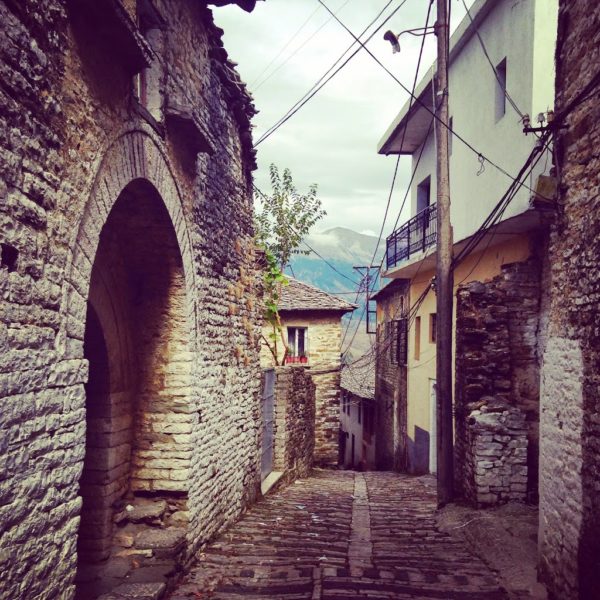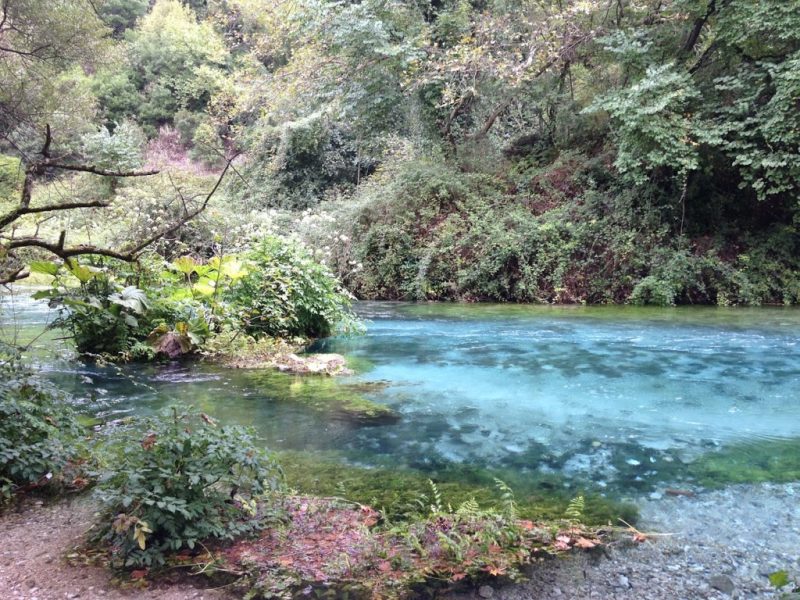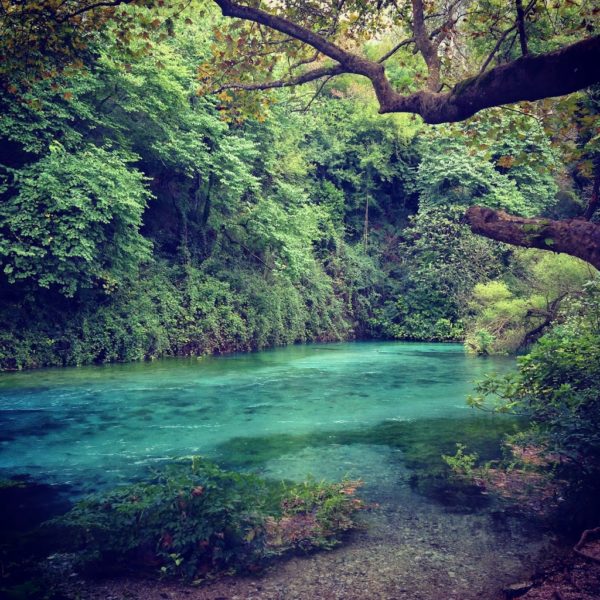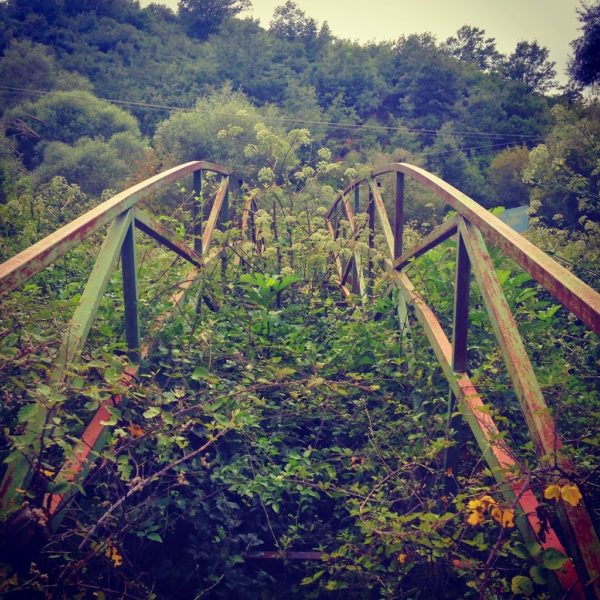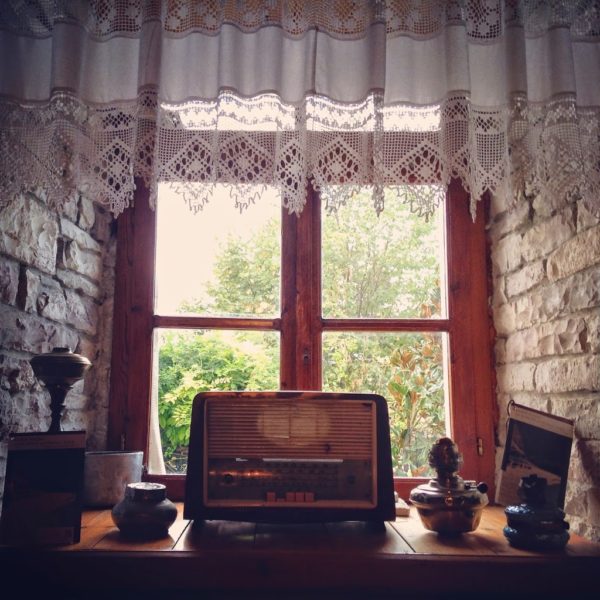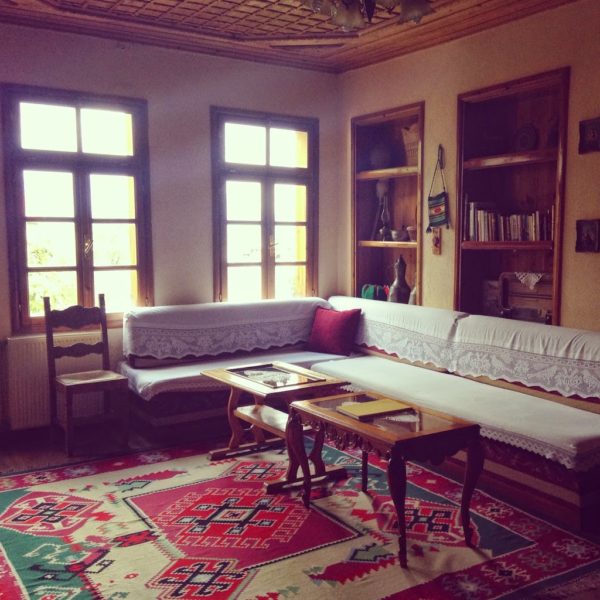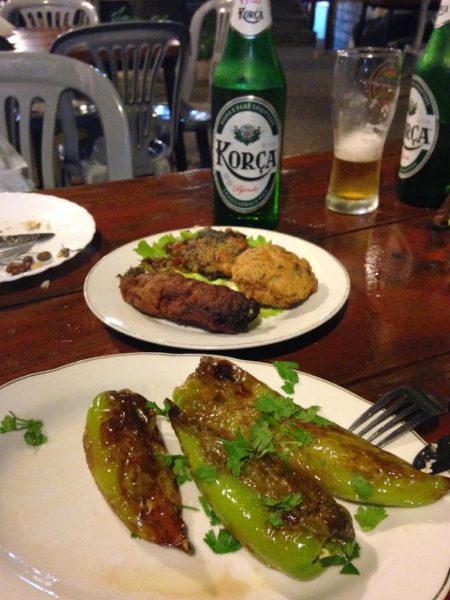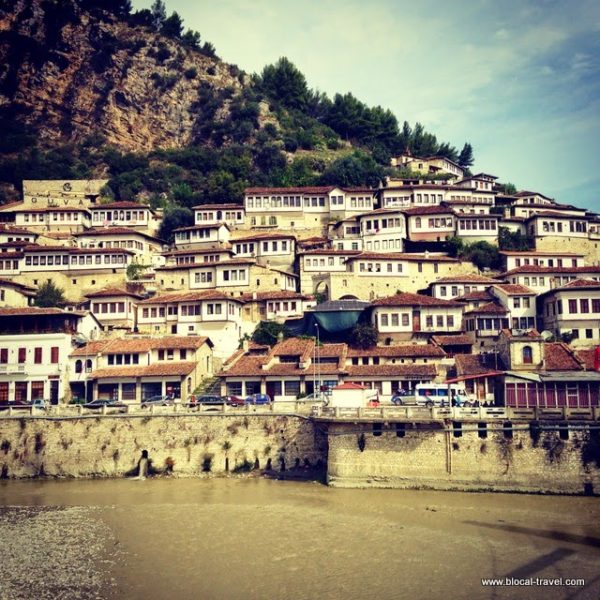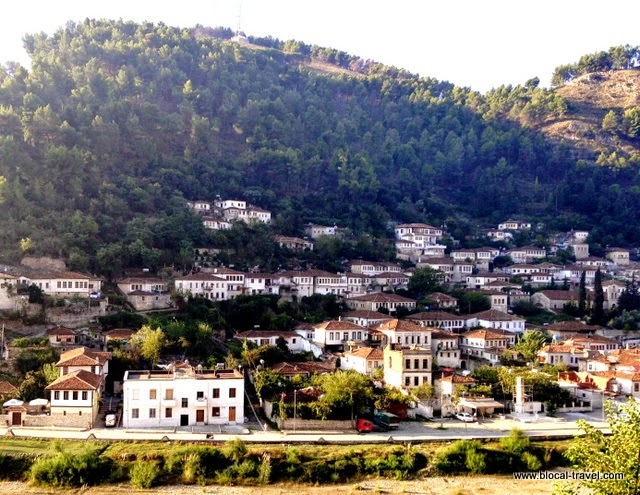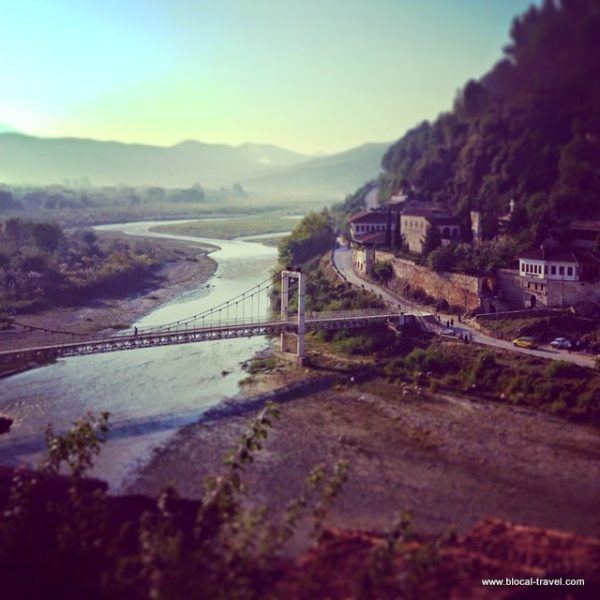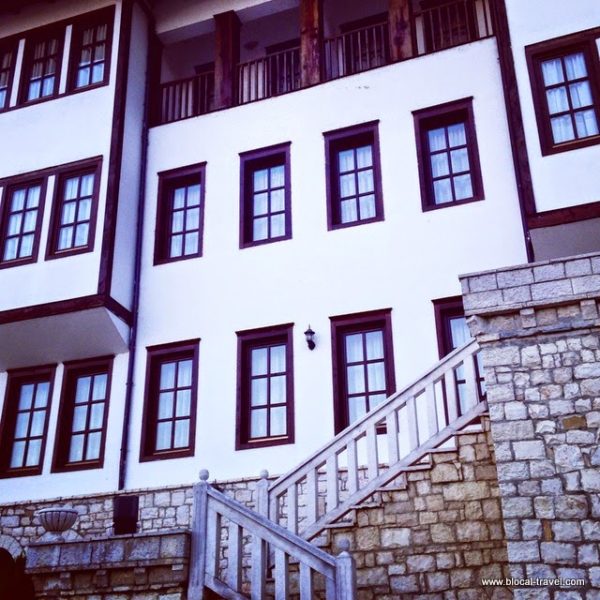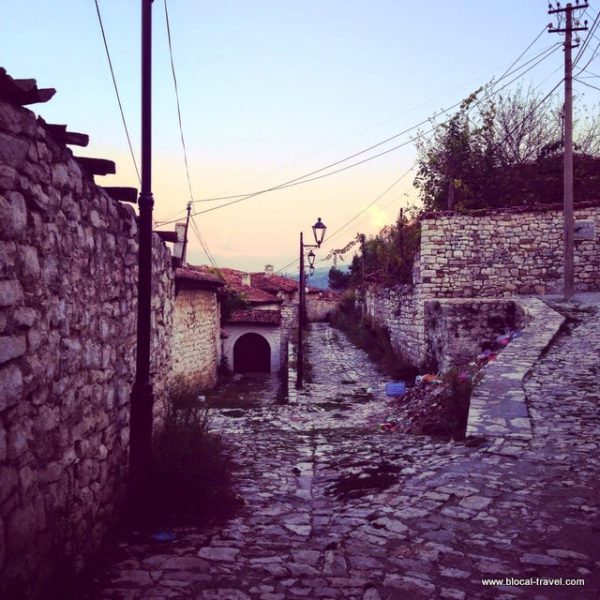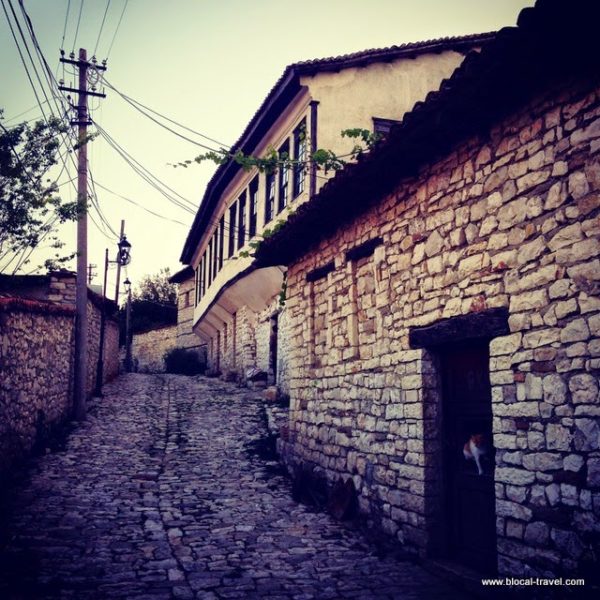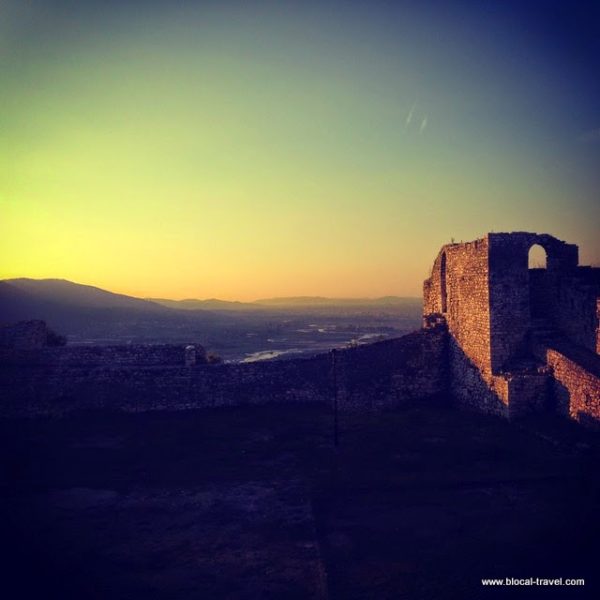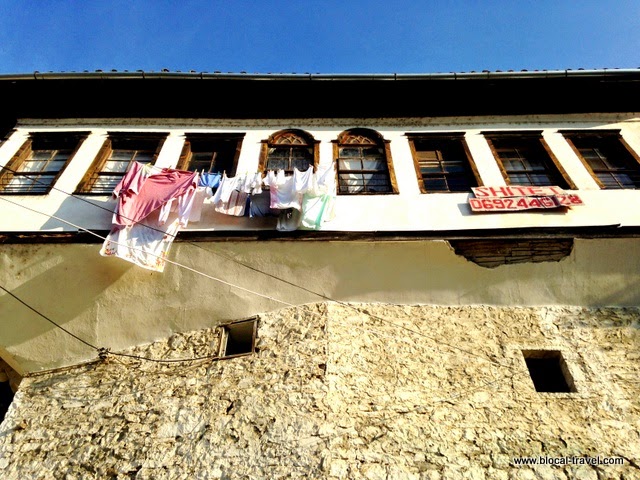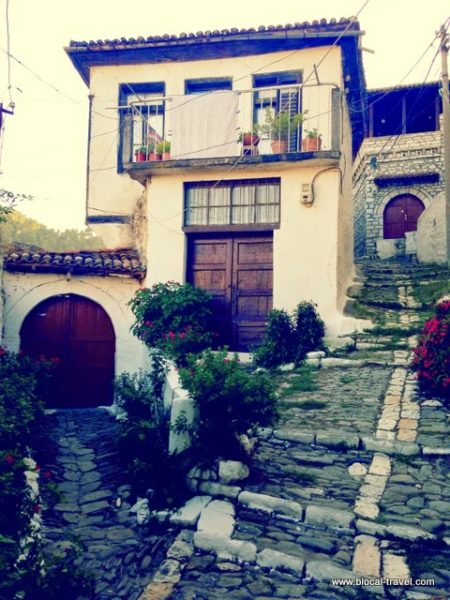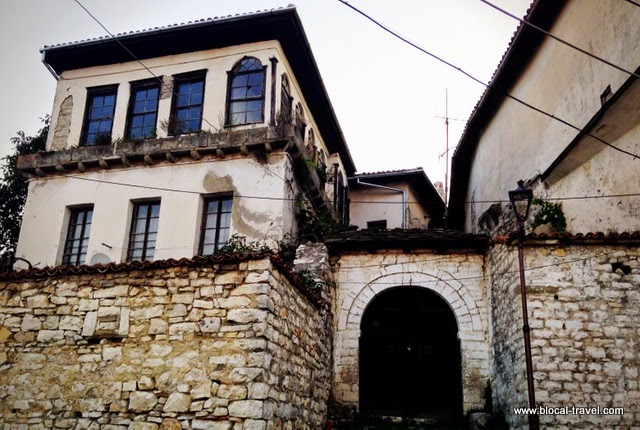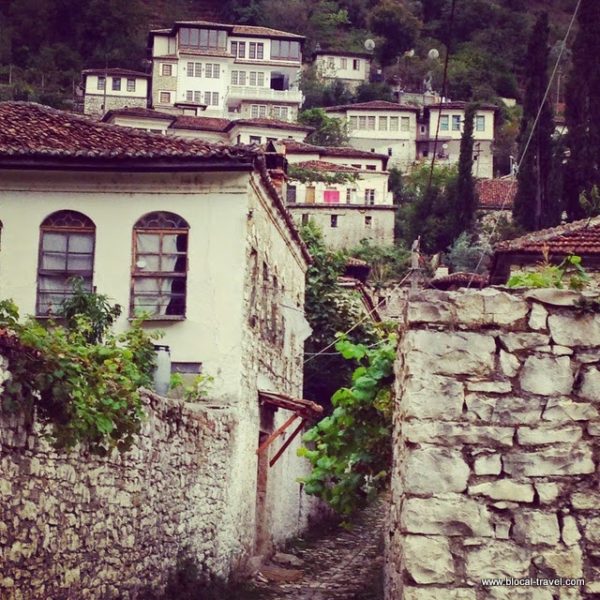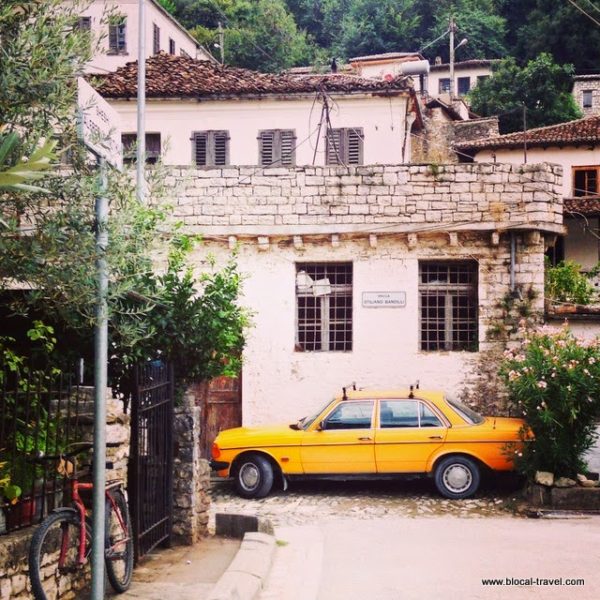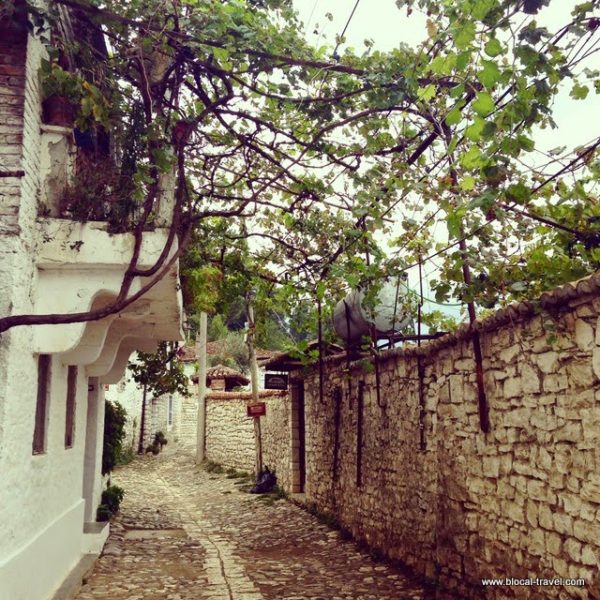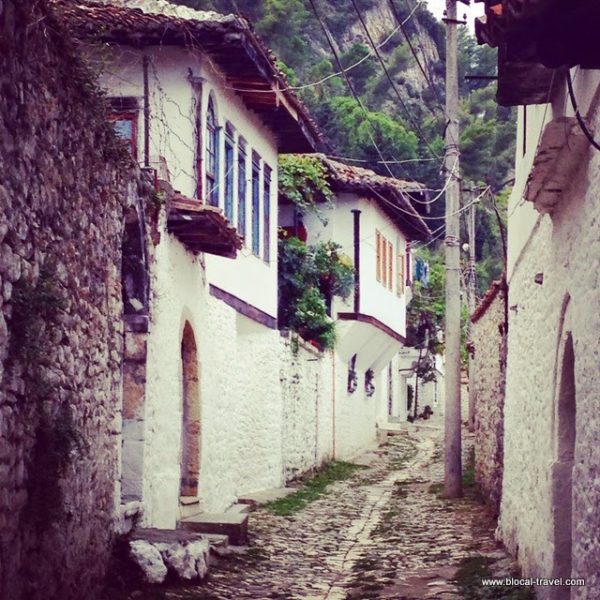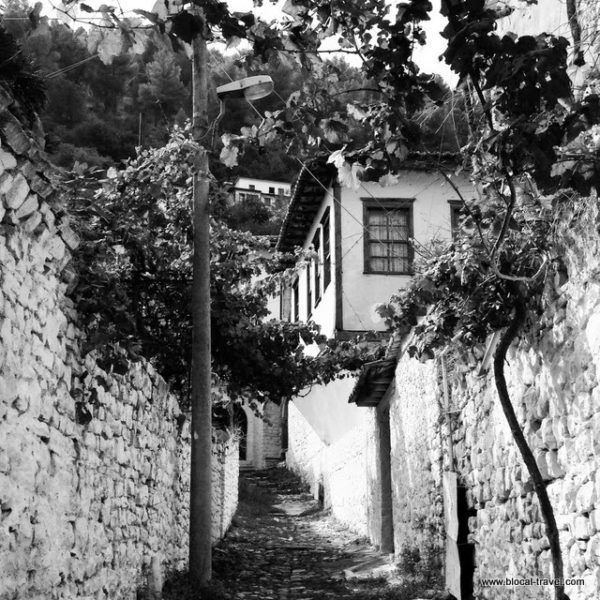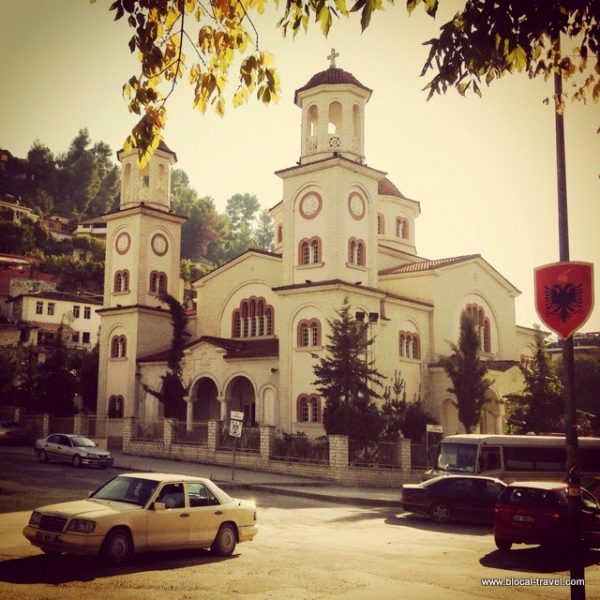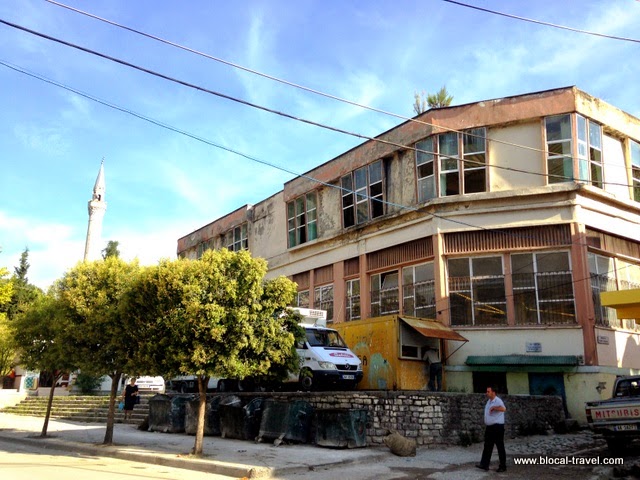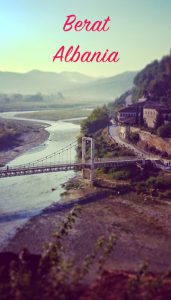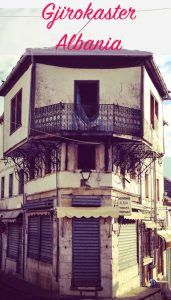Both Gjirokastër and Berat are well-known for their old neighbourhoods preserving historic Ottoman-era architectures, a style originated in Turkey between the 14th and 15th centuries and arrived in Albania during the 18th and 19th centuries, but that’s not the only reason why I found them both very fascinating!
The ancient town of Gjirokastër
The morning after I woke up very early, way before the opening hours of all souvenir shops downtown. I went out alone at the sunrise, wandering around old Gjirokastër and watching its bright white houses being progressively enlightened by the sunshine, which was rising from behind the old fortress we visited on the day before.
Old ladies with their heads traditionally covered appeared first in the streets, heading to the market or sweeping in front of their doors. Then, men gathered in front of the bars, sharing stories between cigarettes. I went to the bakery to grab a couple of byrek, which were coming out from the oven at that exact time.
DAY TRIP FROM GJIROKASTER: SYRI I KALTËR (THE BLUE EYE)
The colour of the water at its different depths is mesmerising, shading from emerald to dark blue; and even if the temperature is around 10°, the Blue Eye is so captivating that many people were daring a plunge.
The ancient town of Berat
There is a big NEVER written on the Mount Shpirag on the other side of the valley, which is the anagram of the previous sign ENVER wanted by the dictator Enver Hoxha during the communist regime.
On the morning after, we visited Gorica neighbourhood, where the houses are smaller and more rustic, with vineyards crossing the street from one house to another. Gorica is less crowded than Mangalem, more authentic maybe, let’s say I liked it more.
While I was walking past a Mosque under construction I couldn’t help thinking that I finally got where Berat is not preserved, yet still constructed, imagined, transformed and re-shaped.
Forget the open-air museum feeling of Mangalem and Gorica: over here Berat is lively and bustling!
